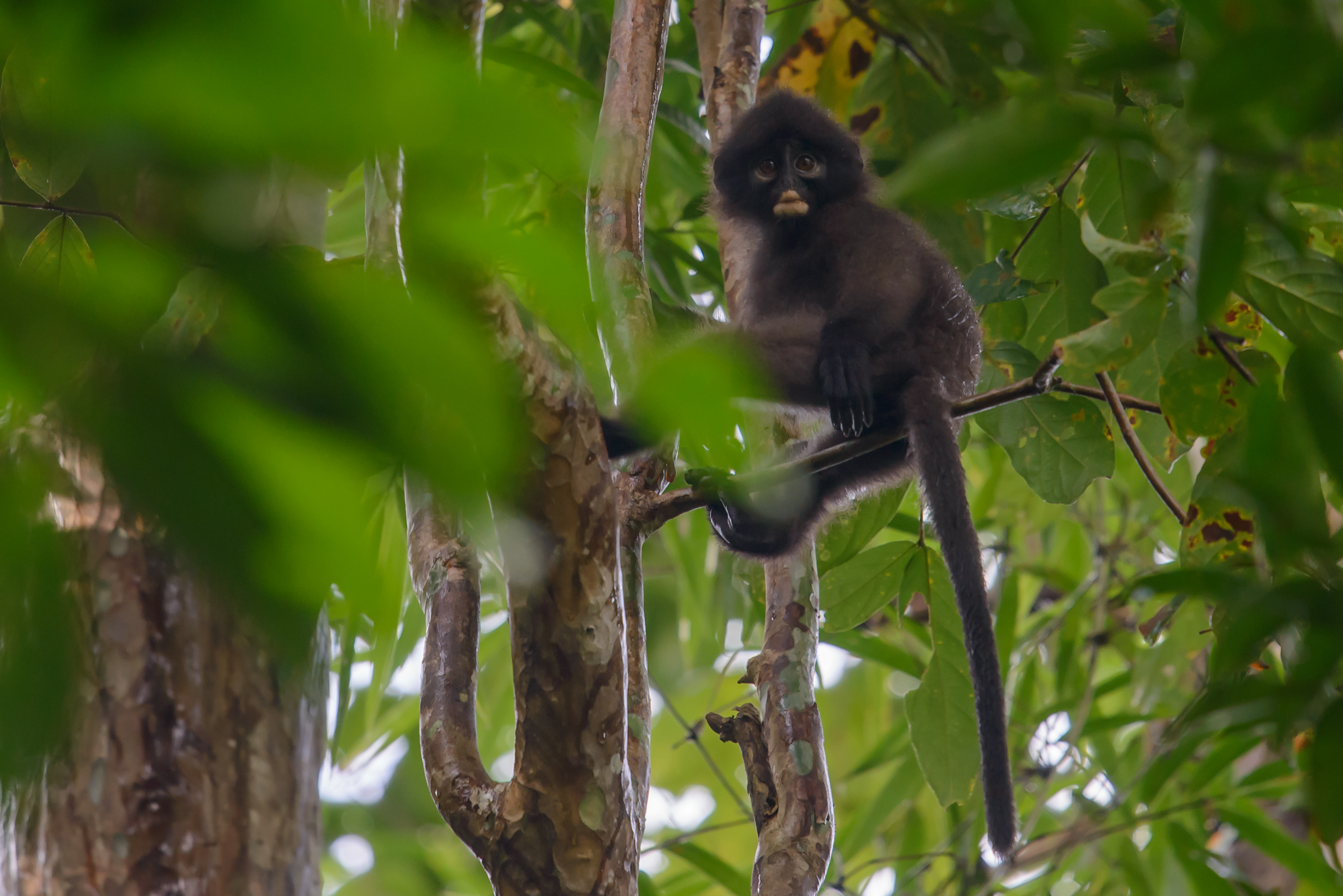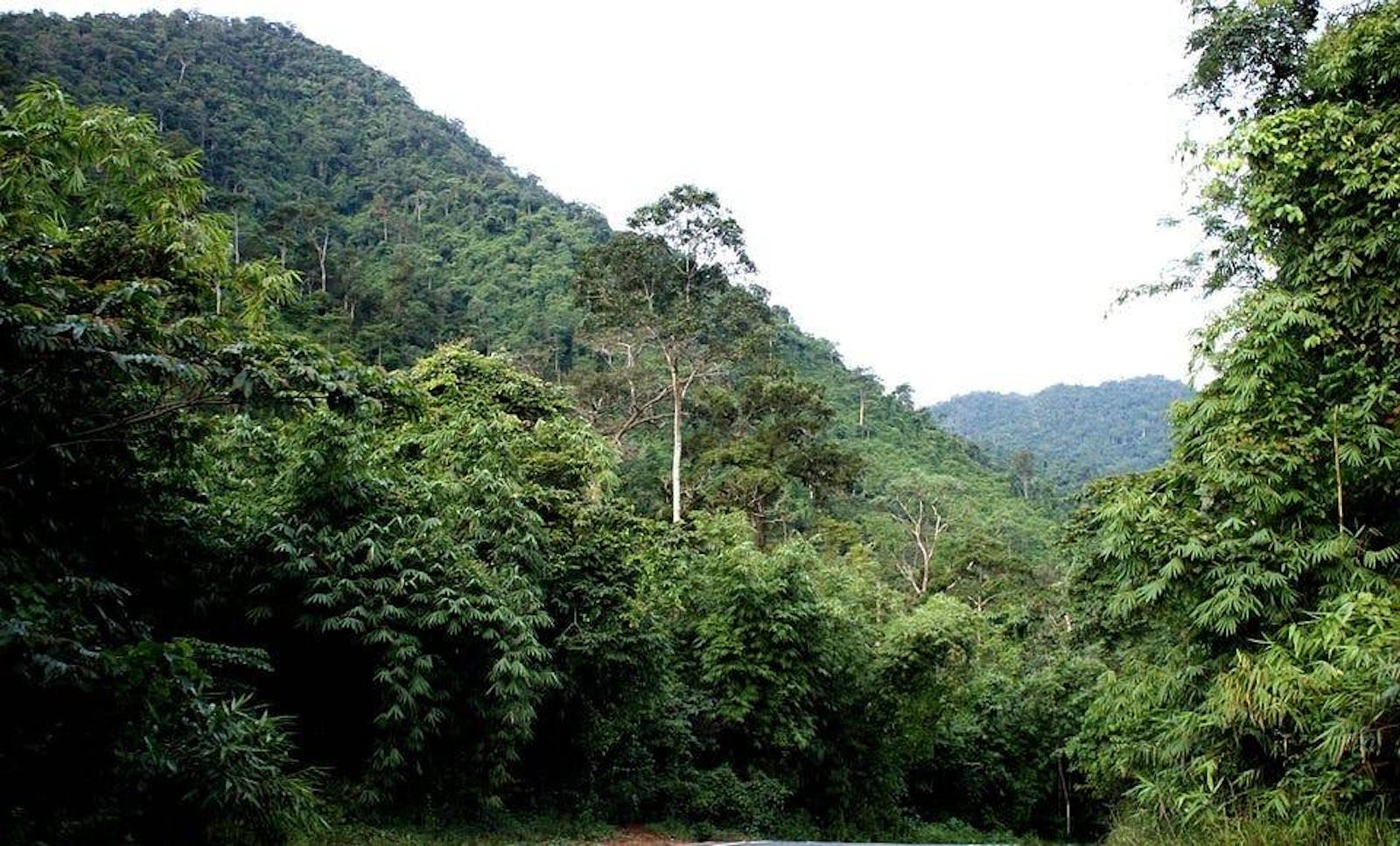Tenasserim-South Thailand Semi-Evergreen Rainforests
The ecoregion’s land area is provided in units of 1,000 hectares. The conservation target is the Global Safety Net (GSN1) area for the given ecoregion. The protection level indicates the percentage of the GSN goal that is currently protected on a scale of 0-10. N/A means data is not available at this time.
Bioregion: Myanmar Coastal Rainforests & Andaman Sea Islands (IM9)
Realm: Indomalaya
Ecoregion Size (1000 ha):
9,754
Ecoregion ID:
284
Conservation Target:
61%
Protection Level:
4
States: Malaysia, Myanmar, Thailand
The ‘most wanted bird’ by birdwatchers visiting Thailand is the Gurney’s pitta, a small bird endemic to this ecoregion. A remnant population in the 183 km2 Khao Pra Bang Khram Wildlife Sanctuary in Krabi, southern Thailand used to offer the best chance to see this splendidly-plumaged bird, even though a larger population lives across the border in remote forests of Myanmar. But by 2014 this population had dwindled to just 3 individuals.
_-_Pitta_gurneyi_(3466943227)%20wikipedia.jpg)
The flagship species of the Tenasserim-South Thailand Semi-Evergreen Rainforests ecoregion is the Gurney’s pitta. Image credit: Creative Commons
With a bright, iridescent blue crown sitting on a black head, a bright yellow throat and sides surrounding a black belly, a buff-brown upper body ending in a deep blue tail, tinged with turquoise, this bird is unmistakable… if it can be found. First described from Myanmar in 1875, and thought to have become extinct by 1952, it was ‘rediscovered’ in Thailand in 1986 and other populations were found in Myanmar after extensive, dedicated surveys, only for some populations to become extirpated because of habitat loss.
The story of the Gurney’s pitta epitomizes the fate of most wildlife in this highly biodiverse ecoregion, where habitat conversion and rampant hunting are taking a toll on forest-adapted wildlife.
_CC-Bernard%20Dupont-2013_resized.jpg)
Malayan tapir. Image credit: Bernard Dupont, Creative Commons
The Tenasserim–South Thailand Semi-Evergreen Rain Forests ecoregion is a transition from the continental dry evergreen forests in the central regions of Thailand to the semi-evergreen rainforests along the narrow neck of the Malayan peninsula. The ecoregion spans the mountainous southern regions of the Tenasserim Range that forms the boundary between Thailand and Myanmar, and extends into the northernmost areas of Malaysia.
The southern margin of this ecoregion is defined by the Kangar-Pattani floristic boundary that bisects the peninsula near the Thai-Mayalsia political border, and is the area where there is a turnover of about 575 plant genera. This is likely due to a climatic transition from a region of non-seasonal rainfall to one with a 2-to-3 month dry period, although there is little change in total annual precipitation.
The forests are dominated by species of Dipterocarpaceae, especially Dipterocarpus alatus, D. griffithii, D. laevis, D. turbinatus, Hopea odorata, and several species of Shorea, with associates such as Fagraea fragrans, Bassia longifolia, Mesua ferrea, Delina sarmentosa, Tetracera assa, and Dillenia aurea. Mature forest trees are buttressed and draped with lianas and epiphytes, including various Drynaria basket ferns and over 700 orchid species. Nepenthes, better known as pitcher plants that trap insects, grow in nitrogen-deficient habitats. Rafflesia kerri, a curious root parasite that is completely devoid of leaves and grows almost entirely below ground, sprouts up foul-smelling flowers that attract flies as pollinators.

Banded langur. Image credit: Creative Commons
This ecoregion contains one of the richest mammal assemblages in Asia, including Asia’s most charismatic megaspecies. The relatively intact and contiguous montane forests support Asia’s largest carnivore and herbivore, the tiger and the Asian elephant. The numerous other mammals of conservation significance include the elusive Fea’s muntjac, Malayan tapir, banded leaf monkey, slow loris, dyak fruit bat, clouded leopard, sun bear, binturong, gaur and banteng, just to name a few. Over 560 bird species have been recorded here, including an amazing collection of nine hornbill species, of which the wrinkled hornbill is close to extirpation from forest degradation and conversion.
Although forest loss is increasing, especially due to large-scale palm oil and rubber plantations, large areas of forests still remain, albeit mostly in the montane areas. Thus, the recommended priority conservation actions are to: 1) secure forests at landscape scales for conservation before further fragmentation closes options; 2) engage local communities and commercial plantation companies as conservation stewards of these landscapes; and 3) develop and implement species recovery plans for highly endangered species, such as the Gurney’s pitta and wrinkled hornbills.
Citations
1. Wikramanayake, E, E. Dinerstein, et al. 2002. Terrestrial Ecoregions of the Indo-Pacific: A Conservation Assessment. Island Press.
2. Critical Ecosystems Partnership Fund. 2012. Ecosystem Profile. Indo-Burma Biodiversity Hotspot. 2011 Update. https://www.cepf.net/Documents/final.indoburma_indochina.ep.pdf Accessed Dec 2017.
3. Greater Mekong Subregion Atlas of the Environment. 2nd ed. Asian Development Bank. 2012. https://www.adb.org/sites/default/files/publication/30074/gms-atlas-environment-2nd-edition.pdf. Accessed Dec 2017.




